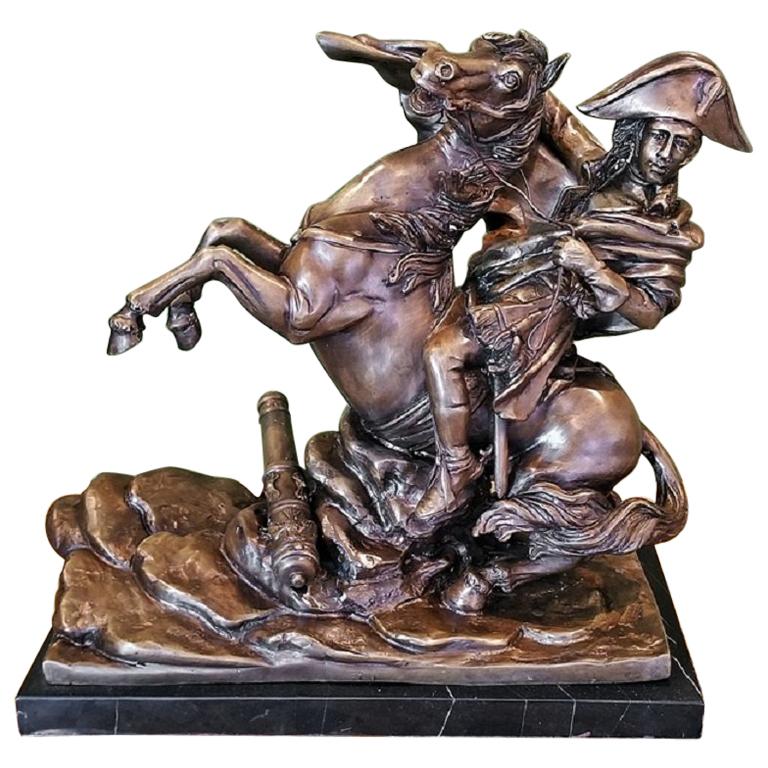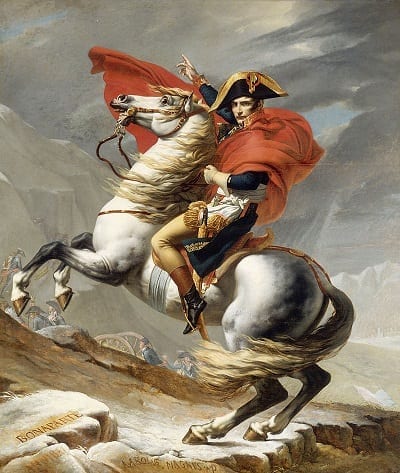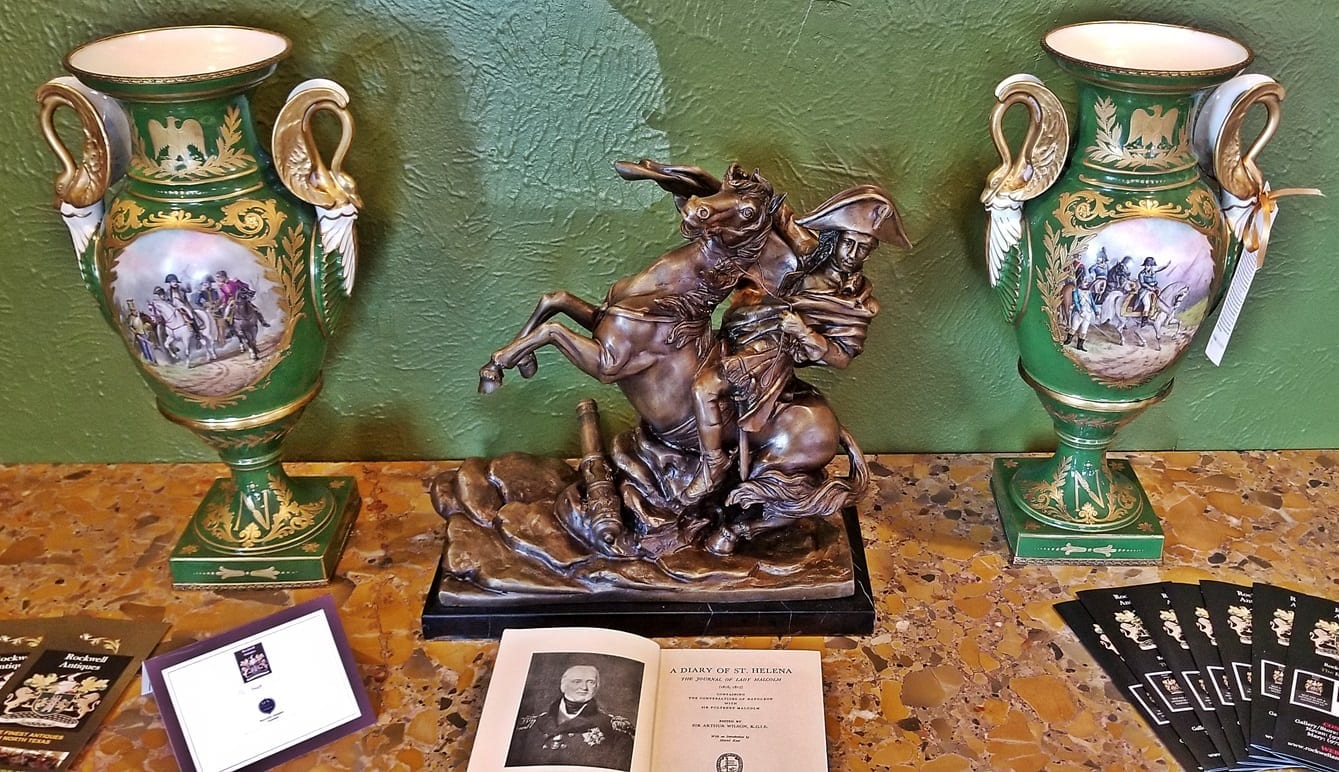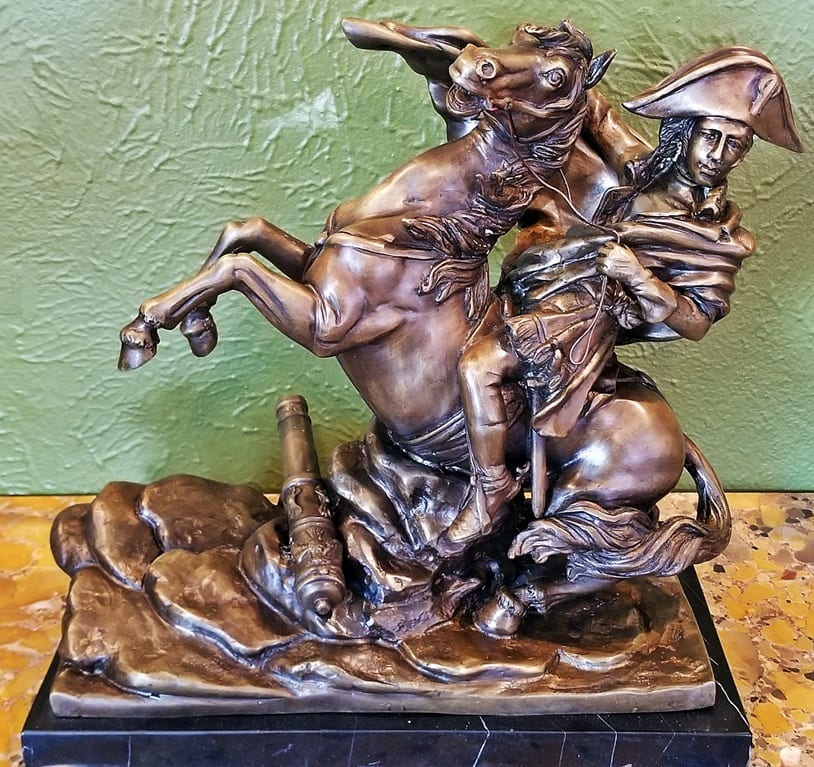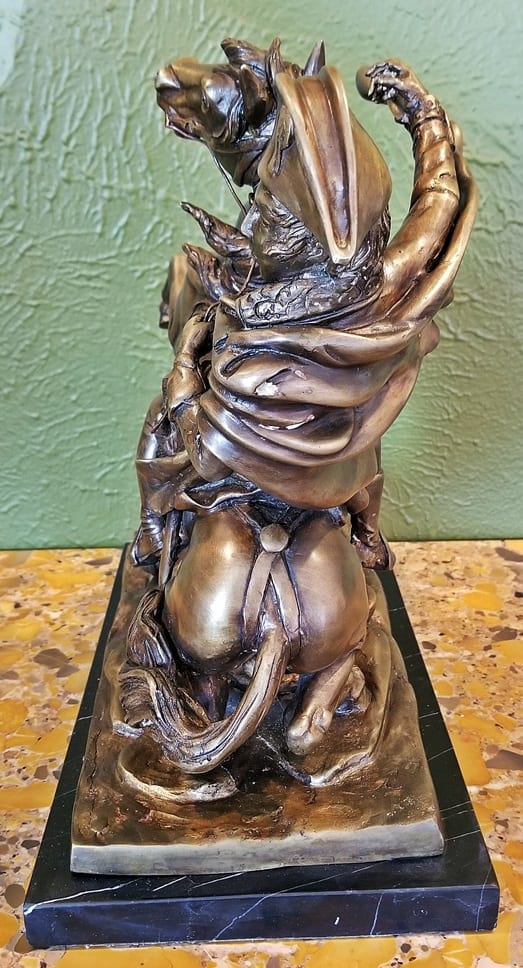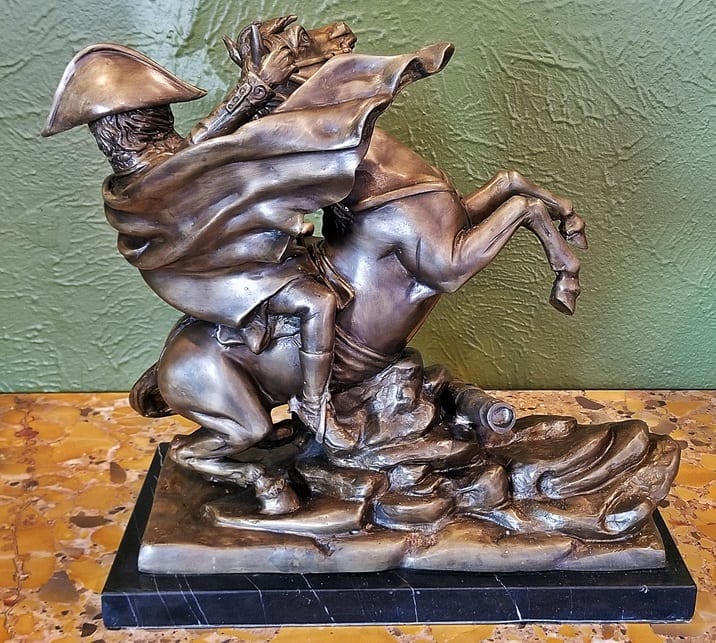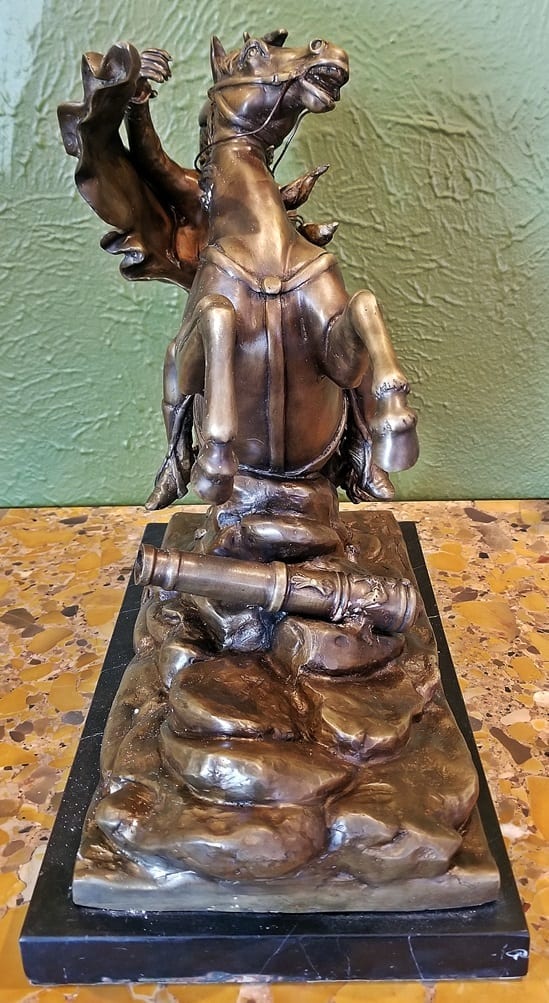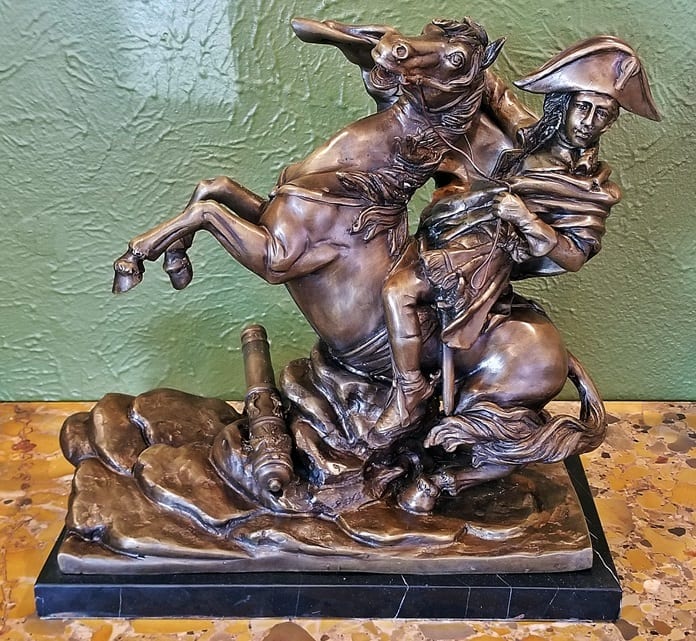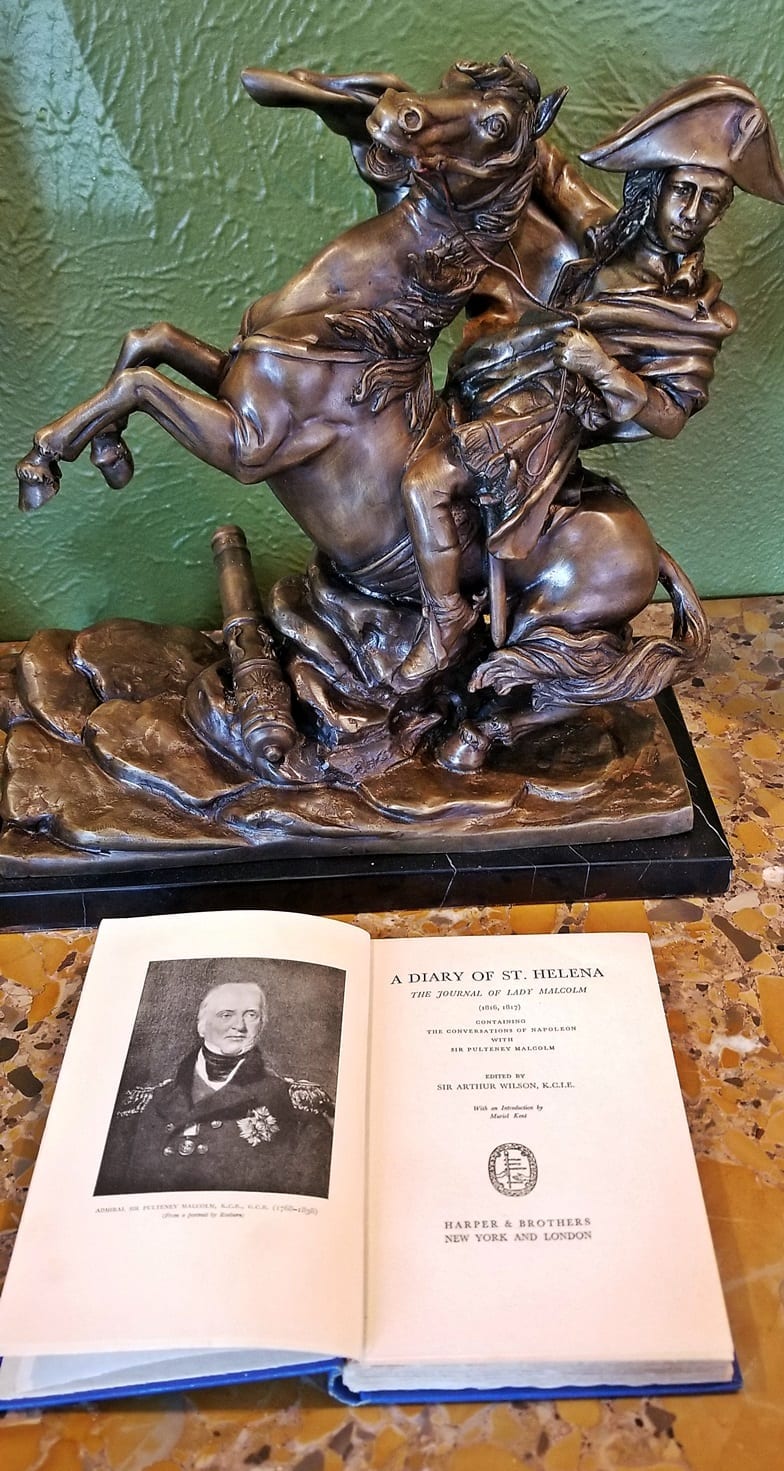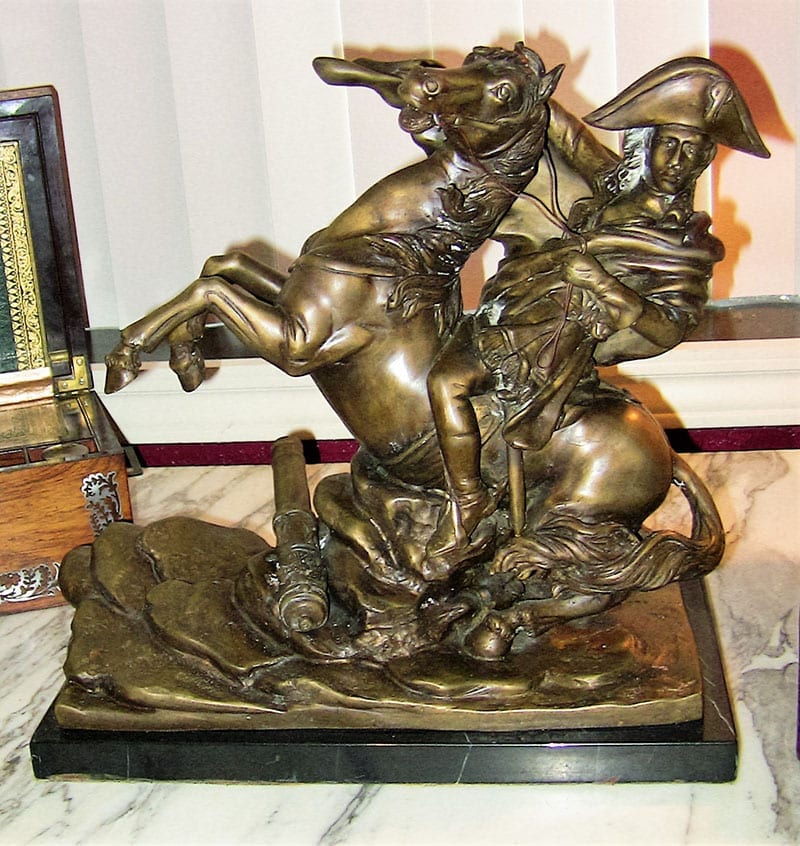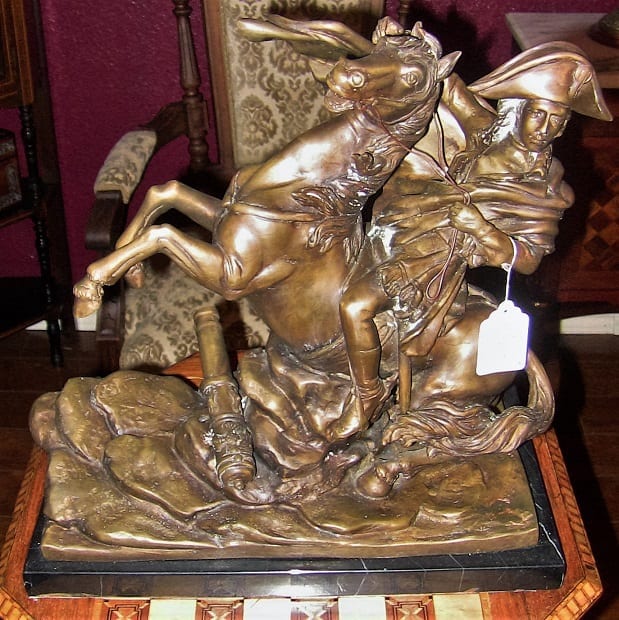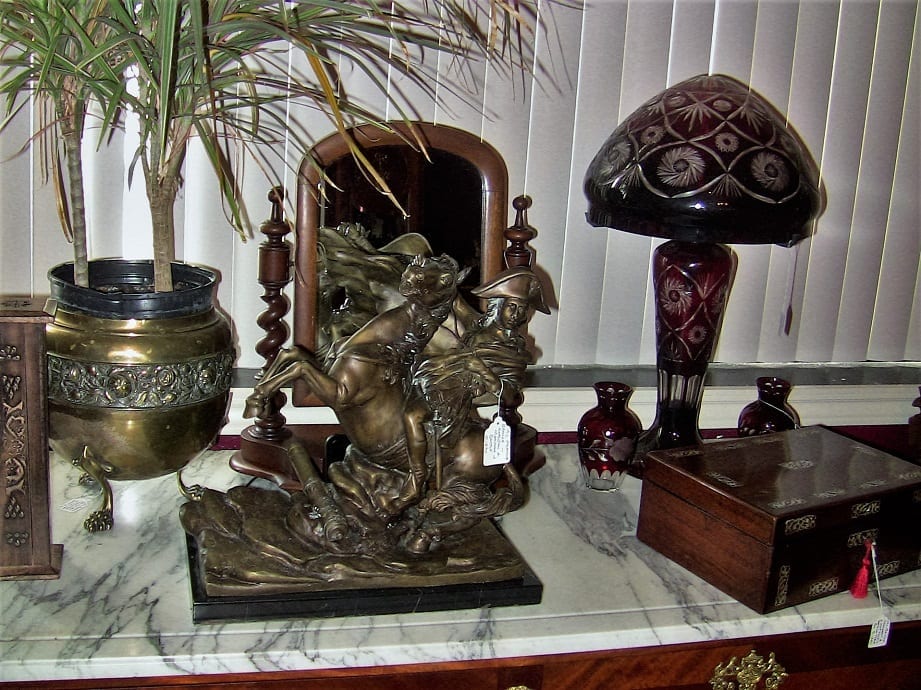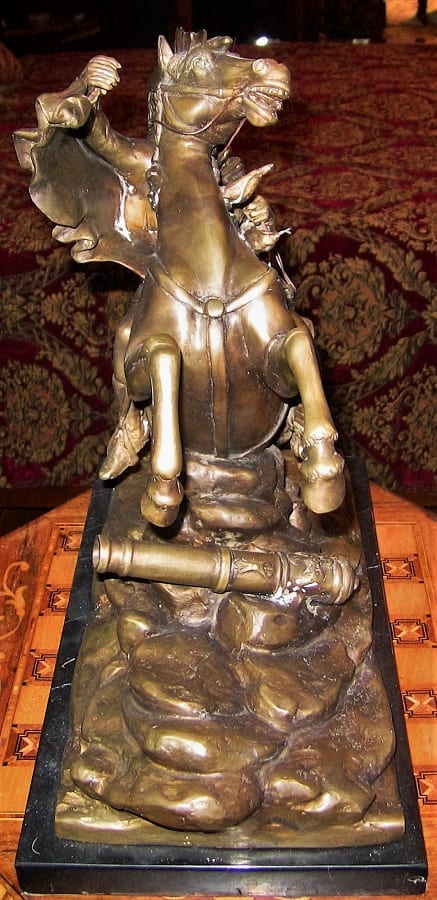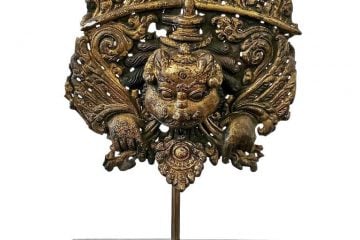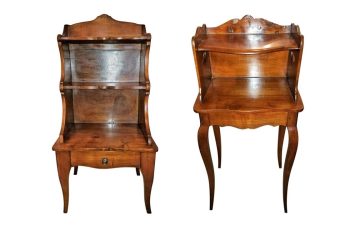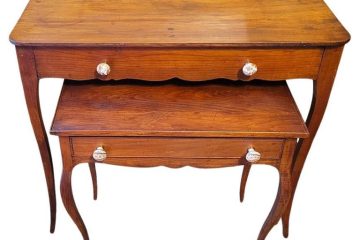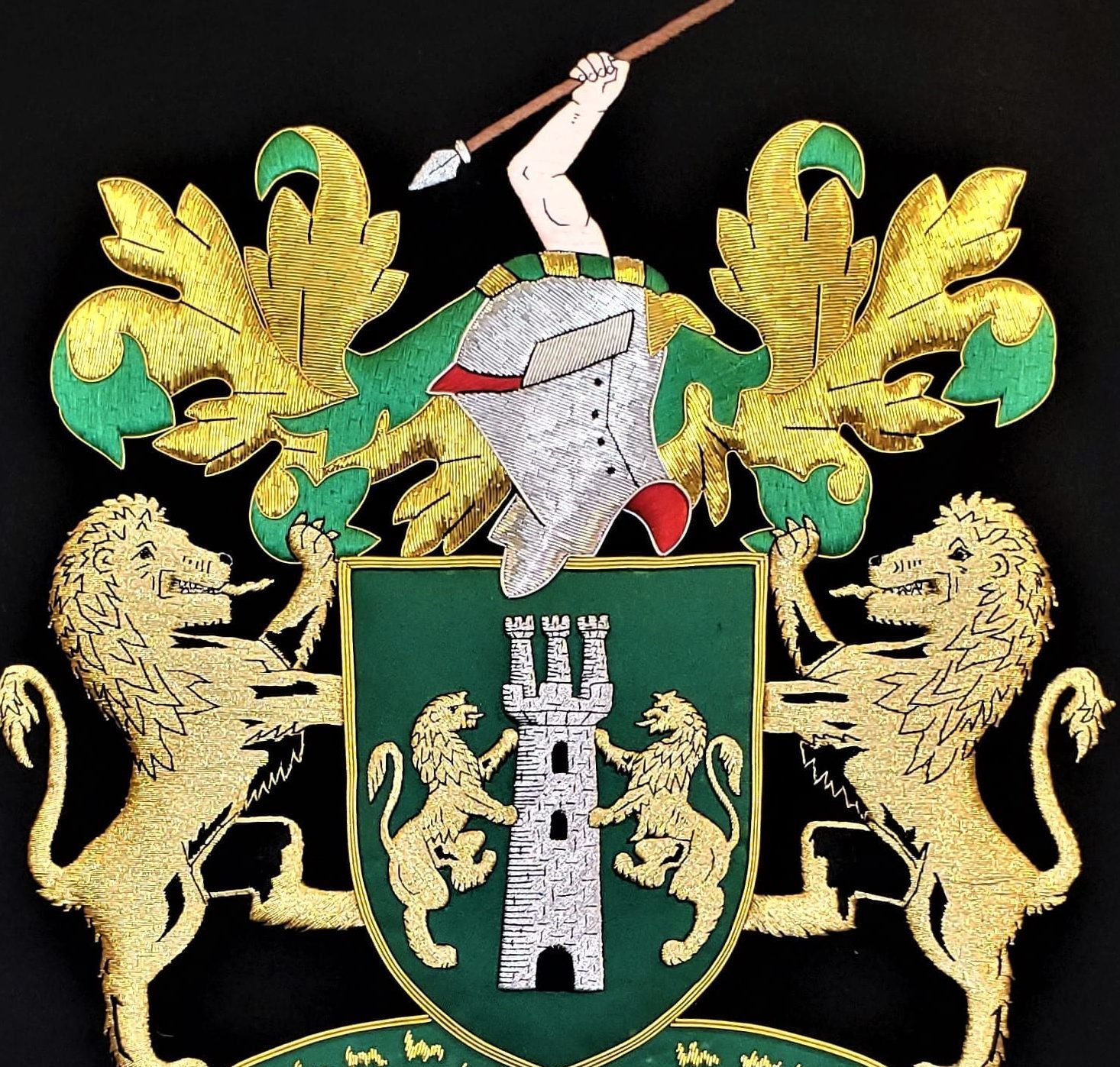PRESENTING A LOVELY late 19C Bronze Sculpture of Napoleon Crossing the Alps.
19th Century Bronze of Napoleon on Horseback in Battle, with canon, etc at his feet and on his favorite horse, Marengo!
This sculpture is based upon the famous painting of “Napoleon Crossing the Alps” by Jacques Louis David circa 1805.
Napoleon Crossing the Alps (also known as Napoleon at the Saint-Bernard Pass or Bonaparte Crossing the Alps) is the title given to the five versions of an oil on canvas equestrian portrait of Napoleon Bonaparte painted by the French artist Jacques-Louis David between 1801 and 1805. Initially commissioned by the King of Spain, the composition shows a strongly idealized view of the real crossing that Napoleon and his army made across the Alps through the Great St. Bernard Pass in May 1800.
We are of the opinion that this sculpture is from circa 1890 and is a wax mold re-casting.
We cannot find a signature, but it has good detail and naturally aged patina.
On a black (white veined) marble base.
Quite a heavy piece … weighs 40 lbs!
Link: https://en.wikipedia.org/wiki/Napoleon_Crossing_the_Alps
MARENGO: Marengo (c. 1793–1831) was the famous war mount of Napoleon I of France. Named after the Battle of Marengo, through which he carried his rider safely, Marengo was imported to France from Egypt in 1799 as a 6-year-old. The grey Arabian was probably bred at the famous El Naseri Stud. Although small (only 14.1 hands (57 inches, 145 cm)) he was a reliable, steady, and courageous mount.
Marengo was wounded eight times in his career, and carried the Emperor in the Battle of Austerlitz, Battle of Jena-Auerstedt, Battle of Wagram, and Battle of Waterloo. He also was frequently used in the 80 mile gallops from Valladolid to Burgos, which he often completed in 5 hours. As one of 52 horses in Napoleon’s personal stud, Marengo fled with these horses when it was raided by Russians in 1812, surviving the retreat from Moscow; however, the stallion was captured in 1815 at the Battle of Waterloo by William Henry Francis Petre, 11th Baron Petre.
Petre brought the horse back to the United Kingdom and sold him on to Lieutenant-Colonel Angerstein of the Grenadier Guards. Marengo stood at stud (unsuccessfully) at New Barnes, near Ely, at the age of 27. He eventually died at the old age of 38, and his skeleton (minus 2 hooves) was preserved and later passed to the Royal United Services Institute and is now on display at the National Army Museum in Chelsea, London. One of the remaining hooves was given to the officers of the Brigade of Guards by John Julius Angerstein as a snuff box. The 4th hoof was mounted as a silver inkwell and retained by the family, it is still owned by the family but is now on loan to the Household Cavalry Museum. The Duke of Wellington was asked to disinter his own horse, Copenhagen, to be exhibited alongside Marengo, but refused to do so. Coincidentally one of Copenhagen’s hooves was also later used as an ornament.
Link: https://en.wikipedia.org/wiki/Marengo_%28horse%29
19C Bronze Sculpture of Napoleon Crossing the Alps.
Dimensions: 15.2 inches Wide, 15.25 inches Tall and 8.25 inches Deep
Provenance: Bought in Ireland at Auction.
Condition: Very Good.
SALE PRICE NOW: $1,600
